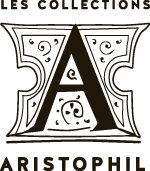Lot n° 61
Estimation :
8000 - 10000
EUR
COCTEAU JEAN (1889-1963).
MANUSCRIT autograph signed "Jean Cocteau", La Corrida du 1er mai, [1954-1957]; 152 pages mostly in-4, plus typescripts.
Important manuscript including all the first draft notes and drafts from which Cocteau, with the help of Jean-Marie Magnan, will draw to extract the final version of La Corrida du premier mai, which represents about one third of the totality of this manuscript.
La Corrida du premier mai was published by Bernard Grasset in 1957, with drawings by the author.
"Published in 1957, this short work dedicated "to Luis Miguel Dominguin and Luis Escobar so that he could translate it for him", was inspired to Jean Cocteau by the discovery of Spain, where he went for the first time in the summer of 1953 and where he was to return several times until his death, and particularly by an event that occurred on May 1, 1954: attending a bullfight in the Seville bullring, Cocteau was dedicated by Damaso Gomez his bull. From that moment on, with the matador's black hat on his lap, the poet "became the spectacle he was watching" - the shock he felt was so violent that Cocteau wonders if it was not the cause of the first myocardial infarction he suffered a month later. Cocteau then understood the secret of the marriage between the "White Lady" (Death), represented by the bull, its "ambassador", and the bullfighter, in this combat where man becomes the beast in order to understand it, and vice versa, where man and beast alternately change roles and sex. Thus, the bullfighting, until then external, was incorporated into his personal mythology, and even represented it. From then on, Jean Cocteau understood Spain and loved it with respect, with passion. This essay on Spain also includes: Hommage à Manolete (three poems, the last one in prose);
Notes sur un premier voyage en Espagne, dated July 1954" (Jacques Brosse). Cocteau added a farewell letter to Federico [Garcia Lorca], and L'Improvisation de Rome, a transcript of a talk on Picasso, recorded on a tape recorder by the organizers of the Picasso exhibition in Rome in 1953.
All these sheets are gathered in an orange cardboard folder with rubber bands, bearing in Carole Weisweiller's hand the title "Corrida du 1er Mai" and, in Jean Cocteau's hand, the following mention: "In short, dear Jean-Marie, delete everything that is not in contact with the bullfight and Spain. Jean".
As this manuscript testifies, La Corrida du premier mai was one of Cocteau's most difficult works to complete. Born of the shock experienced at the bullfight of May 1, 1954 (a note gives the exact date of April 30, but May 1 makes a better title!), the book gives itself the ambition of "fixing the modifications of consciousness obtained in a Frenchman by this drug of the people of Spain: the bullfight. Cocteau immediately takes notes on the art of bullfighting, on the soul of the Spanish people, on Seville, refusing any easy picturesque; he wants to plunge into the heart of what the essence of bullfighting is, whose tragic and sexual dimension he underlines.
These exceptionally dense texts generally occupy one or two pages, and Cocteau's ambition was undoubtedly to merge them into one continuous text. But in June, back in Santo Sospir, he is struck by a heart attack and cannot work in a continuous way. He continued to take notes, but was unable to order them.
It is only two years later, at the beginning of October 1956, that he sends these accumulated pages to his young friend Jean-Marie MAGNAN, in charge for him to bind these scattered notes and "to reconstitute the beast"; this one, born in 1929 and poet himself, was originating from Arles, regular of the arenas, and had made the knowledge of Cocteau through Lucien Clergue.
The present manuscript allows us to take the measure of the immense "work à la Champollion" (letter of October 17) that he accomplished. He tried to find a thematic unity of these pages that he grouped in several sets, numbered and deciphered. Cocteau pays tribute to him at the end of the book by evoking these "illegible notes" from which Magnan was able to draw the text, organizing the text extracted from these files that were often in the state of drafts, as shown by the different paper formats, the use of ballpoint pen alternating with pencil, and the sometimes fragmentary character. The ordering was done under the control of the poet, who adopted or modified the suggestions proposed by his decipherer.
In order to give more unity to the text, important passages have been deleted, notably reflections on modern science and parascience, where Cocteau opposes Paracelsus and the occult sciences to Cartesianism. Of all these reflections, only two pages will remain in the printed version.
The sets presented here are obviously very dense, more developed than the final text. The same theme develops
My orders
Sale information
Sales conditions
Return to catalogue

